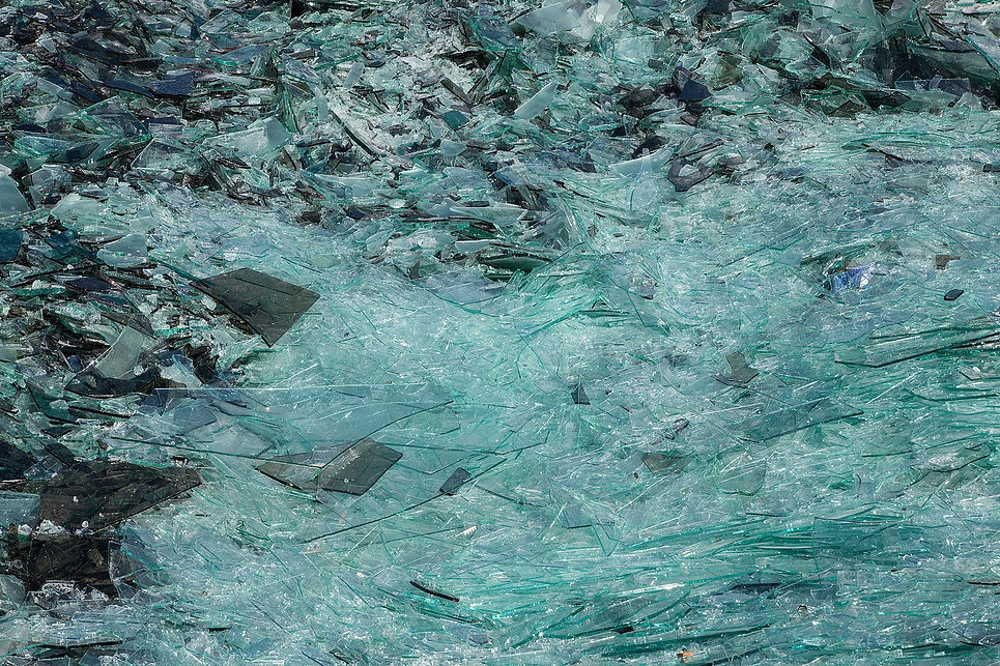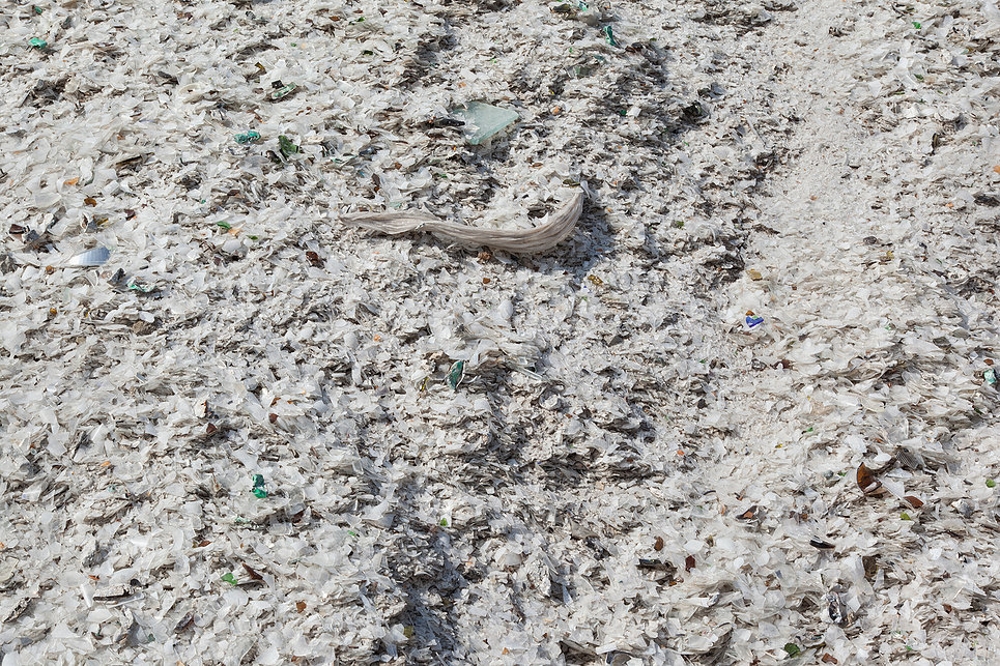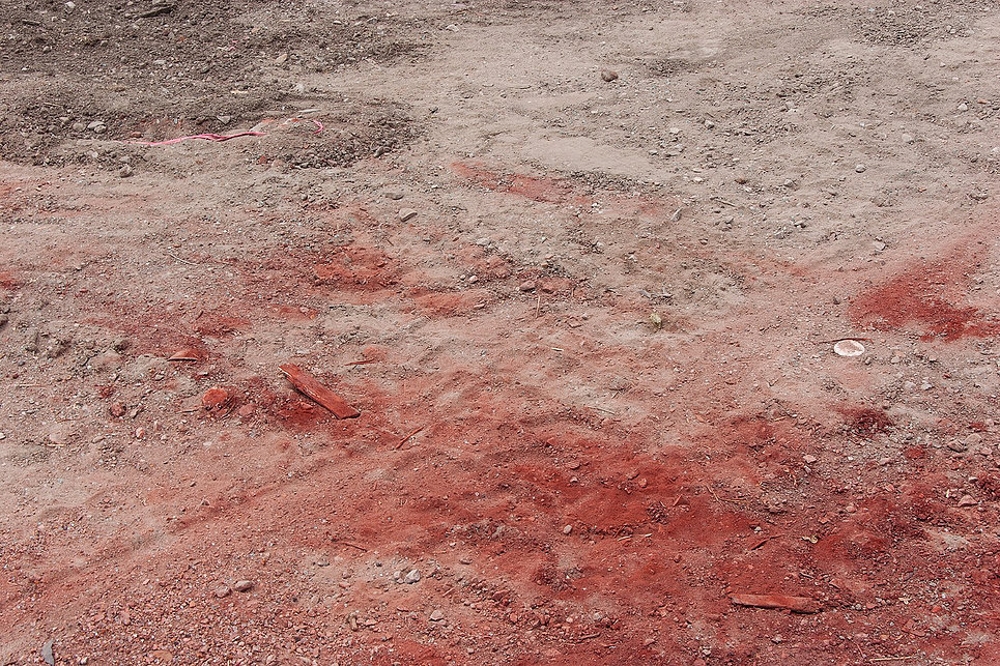Jennifer Colten
(American, b. 1962; resides in St. Louis, MO)
Jennifer Colton’s photographs consider the evolution of land throughout human histories, as well as nature’s underlying endurance among these changes. Her series Significant & Insignificant Mounds (2016-ongoing) depicts ancient and contemporary earthen mounds in the St. Louis area of Missouri. Numerous historical mounds pepper the region, which are believed to have been created by Indigenous Mississippian populations between 800 CE and 1600 CE for burial or religious purposes. Colten photographs these monuments as well as visually-similar contemporary mounds formed by slag heaps, landfills, and other forms of industrial waste. From the surface, the two types of mound appear similar, yet, both have evolved for very different purposes and reflect the societies that built them.
In another series, Of Place and Non-Place (2010-2015), Colten points her camera at the ground, recording debris from construction sites or tracks left in the ground by machines, as evidence of what she considers to be the “residue of civilizations.” She captures areas that are on the edges of development, at once wild and not wild. Colten states: “I am compelled by the resilience of nature as I wander this space, imagining a possible future world―one without human presence. Here, nature sustains, not as mankind would have it, but nonetheless reasserting itself around the scars, and finding new expression.”
Jennifer Colten completed her BA in English from Wesleyan University, Middletown, CT, (1984) and her MFA from the Massachusetts College of Art, Boston, MA (1988). Her work has been included in numerous exhibitions around the worlds and is held in the permanent collections of the Denver Art Museum, CO; Museum Hundertwasser, KunstHaus Wein, Austria; and the Museo de Arte Moderno, Bogota, Colombia, among many others.
https://www.jennifercolten.com/
![Mound [7056], 2016, from the Significant & Insignificant Mounds series (2015-ongoing)
What a city! What a population there must have been at that time on this alluvial plain.
This view is also strongly evidenced by the fact this this rich plain, which is some 75 miles
long, and 5 to 10 miles wide, is a veritable cemetery of the past, and full of evidences of
long human occupation. Relics of the stone age protrude from the banks of every creek and
ravine. In the rich fields opposite St. Louis and for miles up the Cahokia creek, we have
many times seen the market gardener literally plow through human bones. The little labor
with which enormous crops are grown here would excite the envy of the plodding planter on
the banks of the Nile.
-- History of Madison County 1882](../../images/mpp/colten3.jpg)
Mound [7056], 2016, from the Significant & Insignificant Mounds series (2015-ongoing)
What a city! What a population there must have been at that time on this alluvial plain.
This view is also strongly evidenced by the fact this this rich plain, which is some 75 miles
long, and 5 to 10 miles wide, is a veritable cemetery of the past, and full of evidences of
long human occupation. Relics of the stone age protrude from the banks of every creek and
ravine. In the rich fields opposite St. Louis and for miles up the Cahokia creek, we have
many times seen the market gardener literally plow through human bones. The little labor
with which enormous crops are grown here would excite the envy of the plodding planter on
the banks of the Nile.
-- History of Madison County 1882
![Mound [7791], 2018, from the Significant & Insignificant Mounds series (2015-ongoing)](../../images/mpp/colten6.jpg)
![Mound [0814], 2015, from the Significant & Insignificant Mounds series (2015-ongoing)](../../images/mpp/colten41.jpg)


